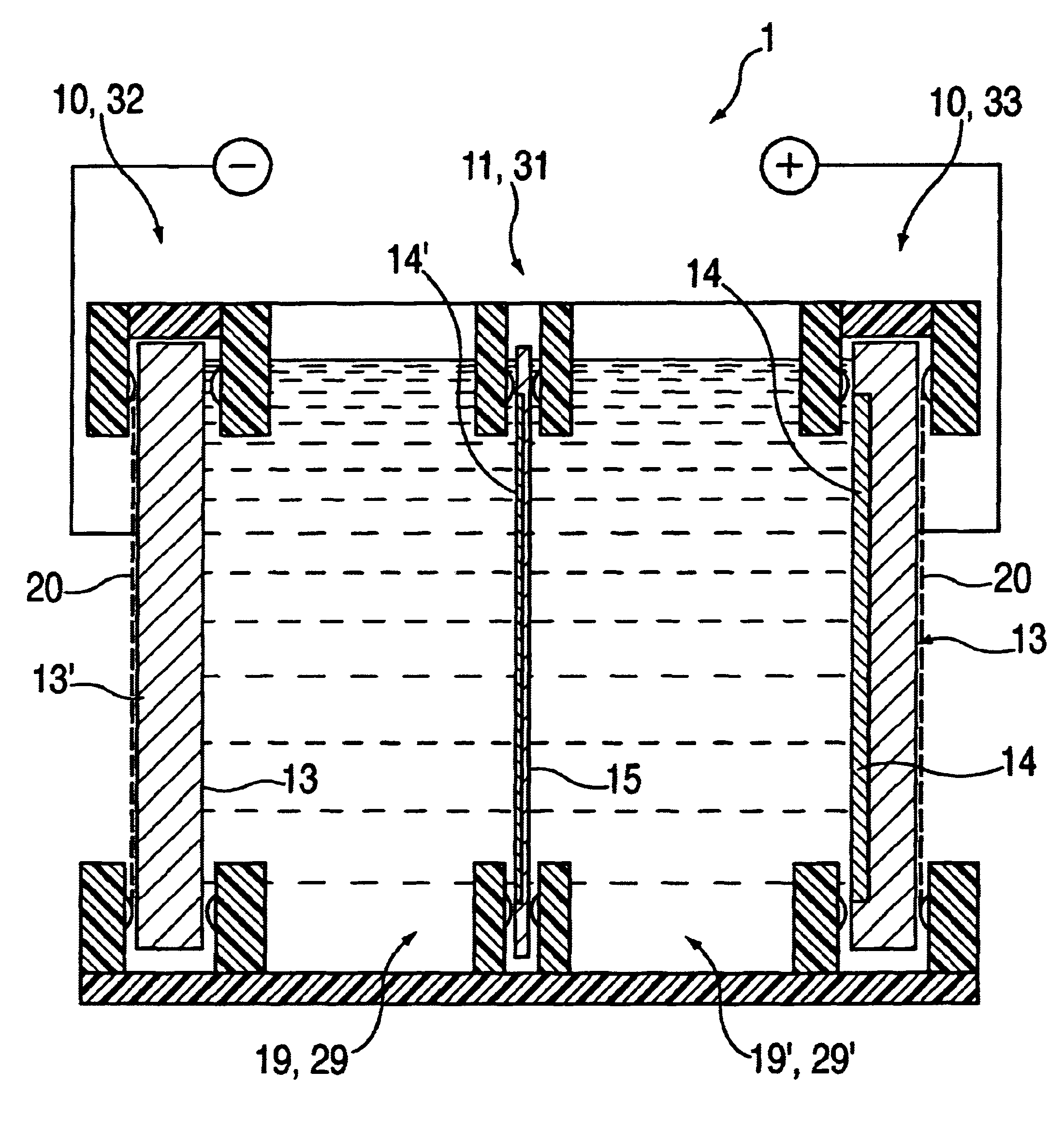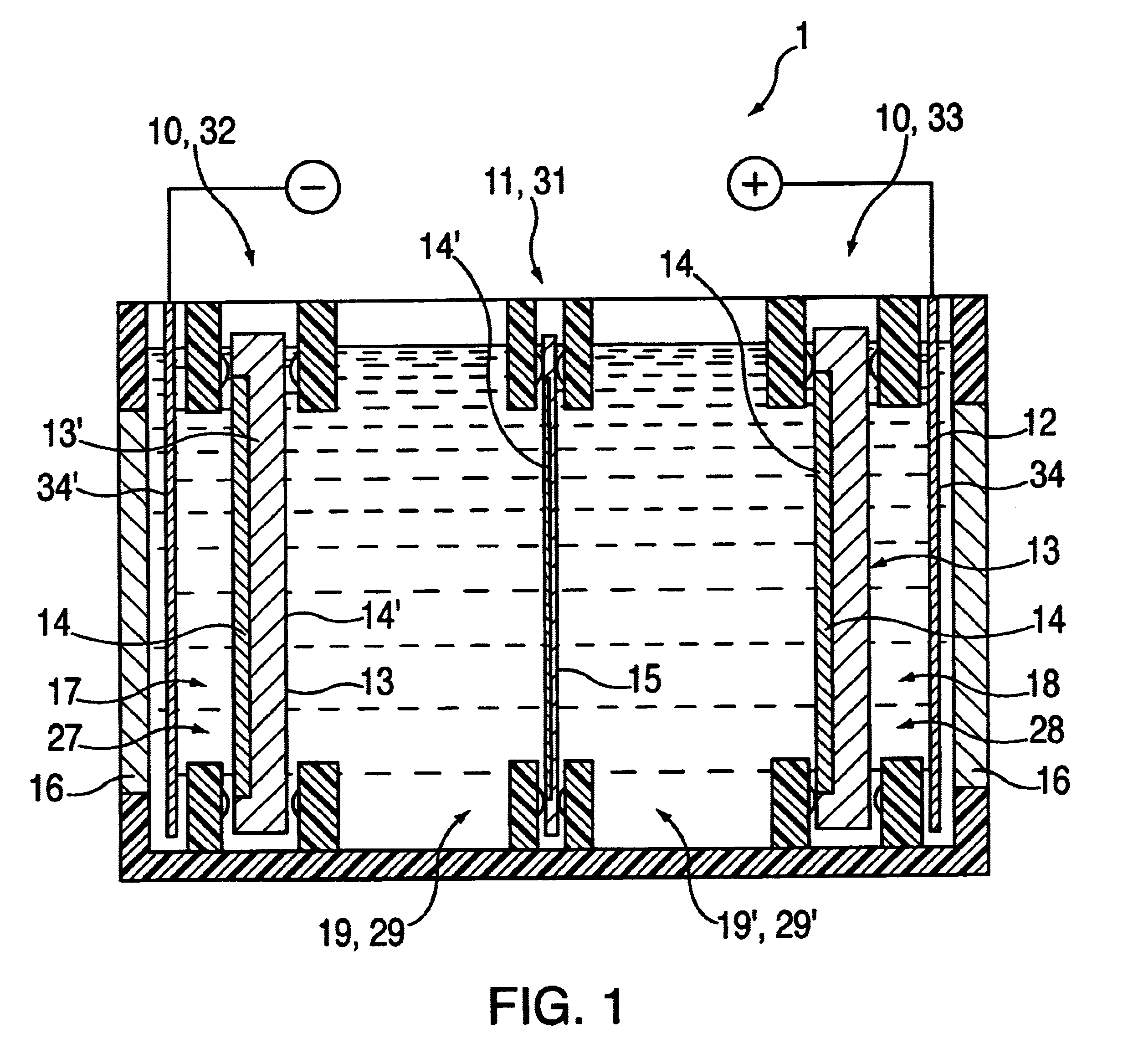Electrochemical etching cell
a technology of electrochemical etching and etching body, which is applied in the direction of cell components, electrolysis components, manufacturing tools, etc., can solve the problems of affecting the electrical or catalytic properties of the etching wafer or the etching body, affecting the etching process, and being contaminated by the dissolved electrode material
- Summary
- Abstract
- Description
- Claims
- Application Information
AI Technical Summary
Benefits of technology
Problems solved by technology
Method used
Image
Examples
Embodiment Construction
FIG. 1, as a first exemplary embodiment, shows an electrochemical etching cell 1 of the present invention having four chambers, a first chamber 19, a second chamber 19', a third chamber 17 and a fourth chamber 18, each of which is filled at least partially with an electrolyte. First and second chambers 19, 19' are filled, for example, with a mixture of hydrofluoric acid and ethanol for the actual etching of an etching body 15, while third and fourth chambers 17, 18 are filled, for example, with diluted sulfuric acid as contact electrolyte. The four chambers 17, 18, 19, 19' therefore define four electrolyte regions allocated to chambers 17, 18, 19, 19', a first electrolyte region 29, a second electrolyte region 29', a third electrolyte region 27 and a fourth electrolyte region 28 that are separated spatially from one another via separating devices which at the same time, however, permit an electrical connection of chambers 17, 18, 19, 19'.
In detail, first chamber 19 is spatially sepa...
PUM
| Property | Measurement | Unit |
|---|---|---|
| Electrical conductor | aaaaa | aaaaa |
Abstract
Description
Claims
Application Information
 Login to View More
Login to View More - R&D
- Intellectual Property
- Life Sciences
- Materials
- Tech Scout
- Unparalleled Data Quality
- Higher Quality Content
- 60% Fewer Hallucinations
Browse by: Latest US Patents, China's latest patents, Technical Efficacy Thesaurus, Application Domain, Technology Topic, Popular Technical Reports.
© 2025 PatSnap. All rights reserved.Legal|Privacy policy|Modern Slavery Act Transparency Statement|Sitemap|About US| Contact US: help@patsnap.com



